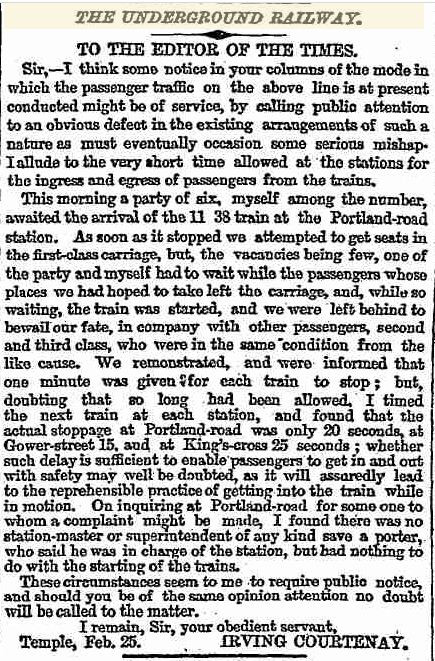The notion of preparing cities for climate disruption is somewhat novel, though of course cities have always been built to adapt to natural conditions. What’s new is that almost all cities must now plan for changes in the natural conditions they take for granted — changes likely to be substantial but which, in their specifics, are maddeningly difficult to predict with precision or confidence.
Though it’s just beginning to catch on in the U.S., urban climate adaptation has been around for longer in pockets around the world, not only progressive places like the Netherlands and Scandinavia but cities in low-lying areas of developing countries. It’s those cities that are really going to bear the brunt of the changes in the next few decades. (You can find lots of these adaptation stories in the Worldchanging book, by the way.) But I feel pretty confident predicting that by mid-century, climate-proofing cities will be on top of the global agenda and well along even in the U.S.
How can more cities be made resilient in the face of coming changes? Why are some cities — even some neighborhoods within cities — better able to cope with disruption than others? Those are the questions Eric Klinenberg explores in a new article in the latest New Yorker. (Unfortunately, you have to be a subscriber to read the whole thing. I’ll try to excerpt enough to give a flavor.)
As I was reading the piece — which is excellent, well worth tracking down — it struck me that the signal features of good climate-proofing have something in common: Conservatives are going to hate them.
1. Climate-proofing costs a lot of (government) money.
There are relatively inexpensive ways to increase resilience, like restoring coastal wetlands or planting urban trees. But for cities, especially those at or near sea coasts (just over half the global population now, likely around two-thirds by 2020), climate-proofing will unavoidably involve capital-intensive projects.
Here’s just one example, from Singapore:

RnD.de.PortraitsSingapore’s Marina Barrage.
The Marina Barrage and Reservoir, which opened in 2008, is at the heart of Singapore’s two-billion-dollar campaign to improve drainage infrastructure, reduce the size of flood-prone areas, and enhance the quality of city life. It has nine operable crest gates, a series of enormous pumps, and a ten-thousand-hectare catchment area that is roughly one-seventh the size of the country. The system not only protects low-lying urban neighborhoods from flooding during heavy rains; it also eliminates the tidal influence of the surrounding seawater, creating a rainfed supply of freshwater that currently meets ten percent of Singapore’s demand. More over, by stabilizing water levels in the Marina basin the barriers have produced better conditions for water sports. The Marina’s public areas, which include a sculpture garden, a water-play space, a green roof with dramatic skyline vistas, and the Sustainable Singapore Gallery, bolster the city’s tourist economy as well.
That’s a brilliant way to address two climate impacts — large precipitation events and rising sea levels — at once. Singapore has also elevated all access points to its underground subway a least a meter above high-water flood levels. It’s also building desalination plants and systems to reuse waste water. It’s also burying its power lines.
Engineers at the Dutch firm Arcadis recently proposed a large new sea barrier for north of New York City’s Verrazano-Narrows Bridge. The price tag: $6.5 billion. And that’s just one small piece of the puzzle. All this stuff is prudent, but it’s expensive.
2. It requires a lot of (government) planning.
Large water, grid, and transportation projects take years to build and can last for decades. (NYC’s subway system is over 100 years old, and London’s is now 150.) If you want to prepare a city for the climate in 2050, you have to plan for 2050. For all the wonders of markets, they — like the humans in them — are not particularly good at maximizing future welfare. In the lingo, they steeply discount the welfare of future persons.
But if you are a city planner, you can’t think like that. In fact, it’s your job not to. Your purpose is to put in place systems that will serve not only today’s residents but future residents as well. Because you discount less, you have to plan more.
3. It requires both physical and social density.
Klinenberg’s piece begins with a comparison of two Chicago neighborhoods, Auburn Gresham and Englewood, both poor, both largely minority, both suffering from poverty and crime. Yet during the infamous 1995 heat wave, the former had a death rate one-tenth as large as the latter’s. Why?
The key difference between neighborhoods like Auburn Gresham and others that are demographically similar turned out to be the sidewalks, stores, restaurants, and community organizations that bring people into contact with friends and neighbors. The people of Englewood were vulnerable not just because they were black and poor but also because their community had been abandoned. Between 1960 and 1990, Englewood lost fifty per cent of its residents and most of its commercial outlets, as well as its social cohesion. “We used to be much closer, more tight-knit,” says Hal Baskin, who has lived in Englewood for fifty-two years and currently leads a campaign against neighborhood violence. “Now we don’t know who lives across the street or around the corner. And old folks are apprehensive about leaving their homes.” Auburn Gresham, by contrast, experienced no population loss during that period. In 1995, residents walked to diners and grocery stores. They knew their neighbors. They participated in block clubs and church groups.
Those are the ingredients of resilience: overlapping social and civic circles, filled with people who, by virtue of living in close proximity and sharing common spaces, know and take care of one another. The greatest danger in times of stress or threat is isolation. Finding ways of expanding public spaces and nurturing civic involvement is not just some wooly-headed liberal project — it’s a survival strategy.
4. It requires decentralized systems.
Scholar Thomas Homer-Dixon describes a resilient system as one that “can absorb large disturbances without changing its fundamental nature.” That is what we want our cities to be able to do: absorb the blows of climate change while remaining fundamentally open, dynamic, and free.
What creates that resilience? Here’s how Homer-Dixon puts it:
Resilience is an emergent property of a system — it’s not a result of any one of the system’s parts but of the synergy between all of its parts. So as a rough and ready rule, boosting the ability of each part to take care of itself in a crisis boosts overall resilience.
The idea is to take advantage of the best of both interdependence and self-reliance, to find “the middle ground between dangerous rigidity and catastrophic collapse,” where the parts work in concert but can also, in a pinch, survive on their own.
The best example here is the electricity grid. A “smart grid” has intelligence distributed throughout, in the form of smart meters and appliances on the customer side, sensors on the lines, storage at various nodes, and real-time awareness and data management for grid operators.
Among other benefits, smart grids are far more able to respond gracefully to disasters or failures:
“The situational awareness of the system might allow operators to reconfigure the system, either before or after the event, to maintain service,” Leonardo Dueñas-Osorio, an engineering professor at Rice University who is developing resilience metrics for critical infrastructure systems, told me. “As a hurricane approaches, operators could ‘island’ areas that look like they will get the most damage. This breaks the system into small clusters and prevents cascading failures. It gives the operators more control, more capacity to keep the power going or get it back.”
This conceptual architecture — disparate nodes loosely networked into fault-tolerant systems — is easy to understand in relation to the grid, but I think it also applies to resilient communication, transportation, water, agricultural, health, and civic systems too.
5. It requires openness and adaptability.
We’re entering a new world and a lot of the old rules aren’t going to apply. A lot of the old ways of doing things are no longer sustainable. To adjust to a century of disruption, we’re going to have to adopt a spirit of innovation, experimentation, and openness to feedback.
——
This list is like a laundry list of right-wing nightmares. Every feature discussed above tacks directly against the strictures of modern conservatism and some of the deeper features of conservative psychology.
1. Spending money on huge capital projects means raising revenue, i.e., taxes. Conservatives hate taxes. And spending.
2. As they’ve done with many other principles that once had roots in prudence, conservatives have taken opposition to planned economies to absurd lengths and now oppose more or less any government planning at all. Today’s Republicans oppose all infrastructure spending and long-term public investment (except what benefits defense and fossil fuel companies). Even bike paths are harbingers of Agenda 21. Republicans are dicking around with Sandy recovery money for chrissake.
3. Conservatives are individualists, not communitarians. They love the rural and the suburban and they hate density. They like their single family homes and SUVs. They do not like the idea of being jammed together with other people, dependent upon public resources and the good will of other people, especially, um, diverse people.
4. The conservative mind is, perhaps above all else, drawn to hierarchy and authority. It is mistrustful of distributed and egalitarian systems. Devolving hierarchical systems into loosely linked networks that rely on emergent effects gives them hives. There’s supposed to be a strong leader at the top, a father figure who makes the tough decisions and enforces the rules.
5. The defining difference between the liberal and conservative psyches is that the liberal psyche is more open to new experiences, more open to change and novelty, more open to revision in the face of new evidence. Conservatives revere tradition and prefer stability.
——
I know, I know. Whenever I so much as use the word “liberal” or “conservative” in a post, some reasonably large chunk of my audience immediately tunes out. They think of such categories as representing petty partisan squabbles, “teams” that only care about “scoring points.”
I certainly don’t deny the element of pettiness in partisan politics. But I think it’s a huge mistake to dismiss the distinction between liberal and conservative as inherently tribal or shallow. In fact, as Chris Mooney shows pretty convincingly in his latest book, those terms describe not just ideologies, but deep psychological types — different ways of seeing the world, interacting with others, feeling and acting. Different values and perceptions. Nobody shares all characteristics of a particular type, and yes, everyone is special and unique like a snowflake, but nonetheless, the terms are useful descriptors. (Sometimes the distinction is described, by Dan Kahan for instance, as between communitarian egalitarians and hierarchical individualists.)
The politically correct thing is to say that “the world needs all kinds,” the two types balance each other out, everyone has their strengths, and so forth. All we have to do is pitch climate mitigation and adaptation one way to one audience and another way to the other audience. We just find a way of showing hierarchical individualists how climate action fits with their values.
About half the time I buy this notion. Sure, speak to conservatives in language they understand.
But the other half of the time, I’m convinced that the challenges humanity faces in the 21st century are inherently ill-suited to conservative psychology. They are not going to allow for any nostalgia or attachment to the status quo — we change or we’re toast. These challenges are going to require global thinking, a tolerance for ambiguity and uncertainty, and radical openness. They’re going to require diversity and a spirit of universal solidarity, not only with everyone on the planet but with future generations. Conservatism, especially in its contemporary incarnations, does not seem remotely capable of any of that.
(By the way, Naomi Klein addressed similar issues in her big Nation article a year ago, and is currently expanding that into a book. I look forward to reading it.)




